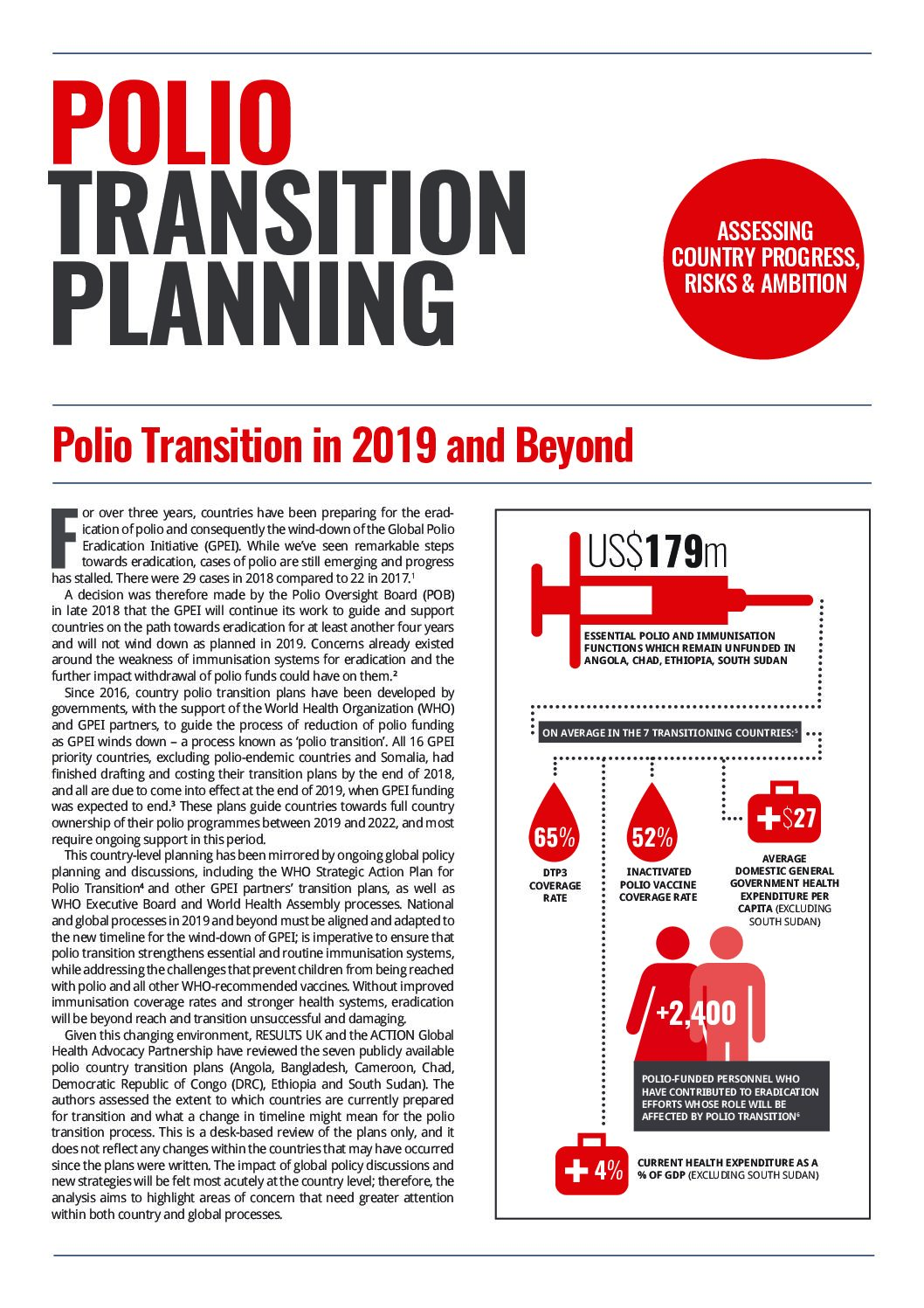Polio Transition Planning: Assessing Country Progress, Risks, and Ambition highlights the link between changing polio financing and the other essential elements of immunization and health systems, which could be at risk without great attention, especially programmatic and financial elements at country level, and contains comparison with Gavi co-financing and immunization rates.
The Global Polio Eradication Initiative (GPEI) will be around for another five years, not winding down in 2019 as previously planned. The process for reducing polio support to countries, known as polio transition, nevertheless continues on an uncertain timeline. RESULTS UK and ACTION’s new policy briefing looks deeper into the country-level transition process – what planning has been done, what challenges identified, what financial gaps exist, and how changes will affect immunization systems.
In this new policy brief, we see that immunization coverage rates, on average, are dangerously low, risks to immunization systems as funding changes are high, and plans are only likely to be partially implementable. The true cost of transition — unpredictable timelines, assumption of donor support, and a lack of ambition — are common themes identified in the transition plans. Further, many plans do not contain financial analysis of the impact of polio transition, and if they do, they identify large gaps with a limited understanding of how they will be filled.


